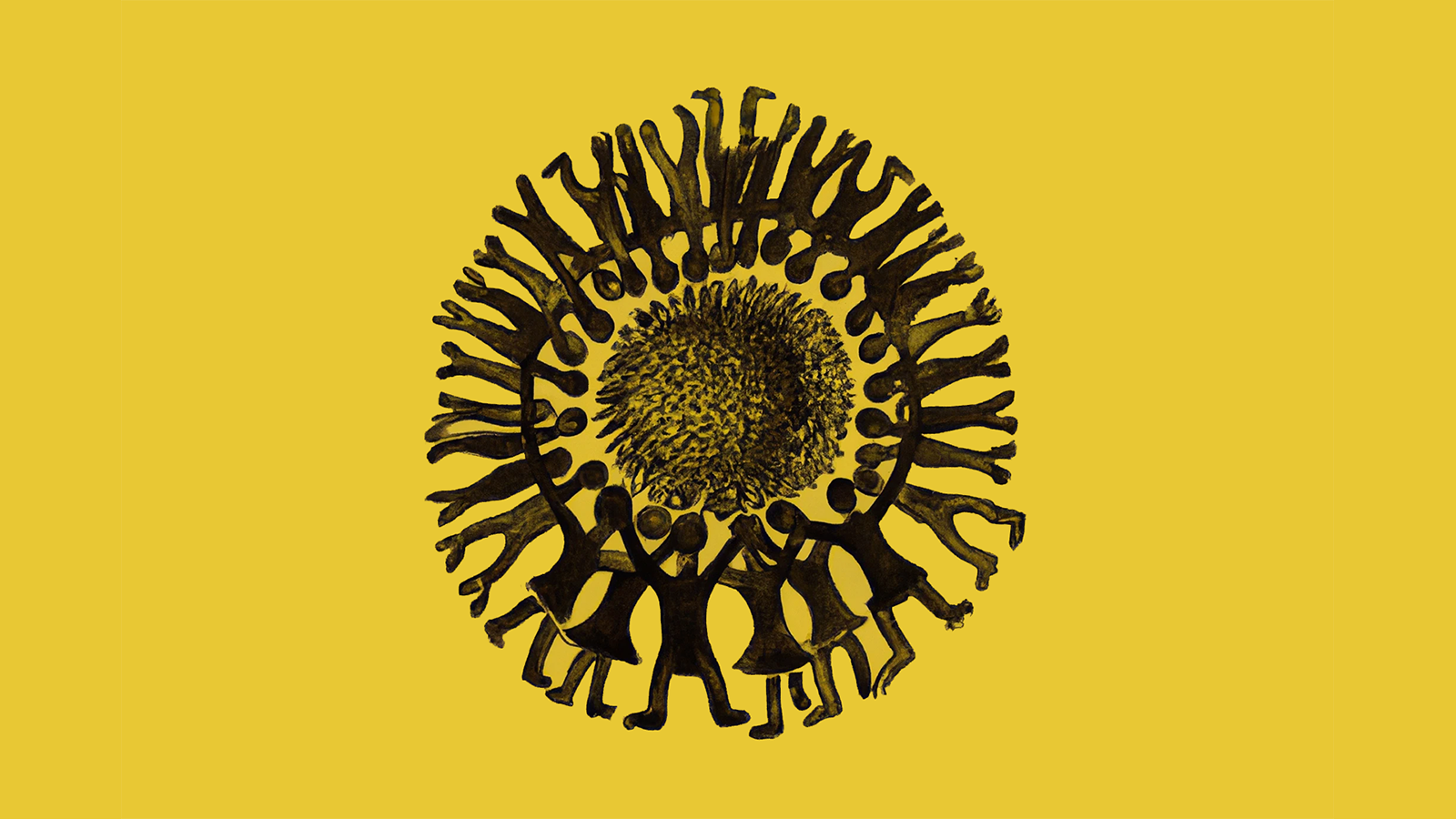Why the pursuit of happiness leads to misery — and what to do about it

- A growing body of research shows that the pursuit of happiness actually makes us miserable.
- This paradoxical finding likely results from people setting impossibly high standards, excessively monitoring their happiness, and misunderstanding what will make them truly happy.
- Positive psychologist Tal Ben-Shahar says that to be happier, we must find ways to pursue it indirectly while also accepting painful emotions.
Imagine you’re traveling through the desert. You’re exhausted, dehydrated, and on the brink of collapse. To the east, maybe a mile out, you see a pastoral outpost with an artesian well centered among the plain, clay-brick homes. To the west, teetering on the horizon, you see an oasis. Palm trees enwreathe a cool blue pond next to which stands a pavilion supported on alabaster columns. And, if you’re not mistaken, it’s populated with sexy servants armed with frond fans and dishes piled with exotic fruits. Which do you choose?
The pastoral village, of course. You may be dying of thirst, but you aren’t an idiot. You recognize a cliché, cartoon-inspired mirage when you see one and know that such a pain-free paradise will remain forever out of reach. Better to seek true relief than risk further misery.
Yet when it comes to our happiness, the mirages of our minds fool us time and again. We set our sights on dreamy perfection, and despite our best efforts to cover the distance, such happiness eludes us. In fact, a growing body of research demonstrates that the more we value and pursue happiness, the less happy we become. This is known as the happiness paradox.
That puts us in a predicament. Happiness is associated with an oasis of life benefits: more creativity, a boosted immune system, stronger relationships, improved mental health, and better performance at work. Plus, it just feels good to be happy. But how can we become happier and enjoy those benefits if we can’t pursue happiness directly? Research suggests there is a way, but we first need to understand why the pursuit of happiness is so counterproductive.
Pursuing happiness, finding misery
In 2014, Brett Ford and Iris Mauss, the principal investigators at the University of Toronto’s Affective Science & Health Laboratory and UC Berkeley’s Emotion and Emotion Regulation Lab, respectively, surveyed the research on evaluating happiness. Based on that survey, they proposed three mechanisms in which valuing and pursuing happiness ultimately backfires.
The first mechanism is that people tend to set high standards for their happiness. They may desire intense levels of happiness or to feel happy more often than is realistic. Either way, those unreasonable expectations lead to disappointment, both in themselves as well as in their lives.
Simply consider that annual exercise in high hopes and crushing reality: New Year’s Eve. In one study, researchers asked participants about their plans for New Year’s Eve 2000. They followed up two months later to see how things went and how much the participants enjoyed their celebrations. They found that most people who partied like it’s 1999 left dissatisfied, but those who planned the biggest bashes, spent the most time preparing, and thought they would enjoy it most were also the least happy.
“This study illustrates what can happen when people attempt to maximize their happiness in a context where happiness is thought to be highly attainable: disappointment can ensue, and therefore, happiness is less likely to be attained,” Ford and Mauss write.
Those only are happy who have their minds fixed on some object other than their own happiness.
John Stuart Mill
The second mechanism is people’s inability to properly forecast what will make them happy — courtesy of a host of biases, heuristics, and misconceptions. One such misconception is to assume that happiness lies with ends rather than through means. For instance, many people adopt diets and exercise routines intending to reach a specific weight or body type. But because such routines feel torturous and are unsustainable, they are quickly abandoned. The end result isn’t happiness but feelings of discouragement and failure.
Another misconception is to assume that happiness is self-focused. People buy new TVs, work hard for that promotion, and spend big to be pampered at the spa. While these pursuits do make people happier, it’s short-lived. Afterward, people quickly return to their happiness baseline and must start the search for the next high again (a concept known as the “hedonic treadmill”).
The final mechanism is self-monitoring. People who value happiness tend to monitor their experiences excessively, which leads to being less satisfied overall. Ford and Mauss cite studies showing that participants who are asked to explain why they liked a product or monitor their happiness while listening to music report being less happy than those who simply experienced the experience. A potential reason for this discrepancy is that monitoring experiences for happiness and enjoyment make people become less in tune with them.
If you’re happy and you know it, don’t do all three
These three misguided mechanisms for happiness have one thing in common: They emphasize, value, and pursue happiness as a direct goal. The way around this according to Tal Ben-Shahar, a positive psychologist and co-founder of the Happiness Studies Academy, is to pursue happiness indirectly.
“If I wake up in the morning and say to myself, ‘I want to be happy, I’m going to be happy no matter what,’ I am directly pursuing happiness,” Ben-Shahar writes in his book Happier, No Matter What. “This deliberate pursuit to be happy reminds me how important happiness is to me — of how much I value it — and therefore hurts more than it helps.”
In his research, Ben-Shahar discovered a means of pursuing happiness indirectly which he calls SPIRE. The acronym stands for spiritual, physical, intellectual, relational, and emotional well-being, and it represents the five elements of life that we can pursue to become happier and healthier. And by shifting our focus away from happiness and toward other goals, SPIRE has the added benefit of helping us sidestep the three mechanisms Ford and Mauss outlined in their survey.
Get inSPIREd
So then, how can you cultivate Ben-Shahar’s SPIRE to pursue happiness indirectly? Unfortunately, it is a question that cannot be answered in an article. As is often the case, the solution will be a personal one and will require self-honesty, open-mindedness, and a willingness to experiment to find the SPIRE makeup that works best for you.
With that said, here are a few ideas to get you started:
Pursue enjoyable means, not favorable ends. Seek out the activities and artifacts that you find intrinsically rewarding. An intrinsic sense of reward not only makes you happier in the moment but also makes pursuits more sustainable over a lifetime.
Returning to the exercise example, it is best to avoid routines that make you miserable even if they promise beach-ready results. It’s better to adopt ways to move that you find pleasurable. If that means going hard at the gym, then that’s great. But if it’s biking, swimming, walking, or even gardening, that’s great too. The same goes for things like work and lifelong learning.
However, this is not an excuse to be lazy. Many intrinsically rewarding pursuits can, will, and should be challenging. A life lived on Easy Street is no life. But in the end, the challenges should be life-affirming, invigorate you, and strengthen your sense of self-efficacy.
Pay attention to your attention. Rather than worry about how much happiness your next vacation or upcoming promotion will bring, learn to just enjoy the experience. Research shows that when our minds wander to things other than the experience at hand, we are generally less happy.
One way to heighten your awareness and contentment of experiences is to approach them with a sense of gratitude. Research by psychologist Adam Grant shows that when we recognize the value in what we do, we become more energized, more engaged, and more motivated — even when it comes to something as seemingly bland as washing the dishes. Exercises in gratitude cultivation, such as journaling, have also been shown to improve our mood.
The best way to cheer yourself up is to try to cheer someone else up.
Mark Twain
Focus on others. Many longitudinal studies have looked at how people thrive, and they overwhelmingly converge on an important finding: People with strong relationships report being happier and healthier than those who don’t. Careers, achievements, and material goods don’t make people anywhere near as happy as social connection does.
“All types of relationships convey benefits to us, not just intimate partners. You don’t have to have an intimate partner to get these benefits. They come from friendships, family relationships, work relationships, and even casual relationships,” Robert Waldinger, director of the Harvard Study for Adult Development, said in an interview.
You don’t have to throw swinging New Year’s parties to build these social connections either. You can grab a coffee, go for a walk, or simply call to see how a friend is doing. These small efforts, Waldinger notes, pay big in your relationships and happiness.
Spend money wisely. Money can’t buy happiness, but it can nurture it if you spend wisely. Rather than lavishing yourself with passive leisure and the latest tech, use your money on pursuits such as exercise, hobbies, education, and exploration — things that feed into Ben-Shahar’s SPIRE. The wisest spenders use their money (and time) to benefit others and build social connections through acts of generosity.
Don’t confuse pleasure with happiness. New furniture, delicious cocktails, and nights on the town can be pleasurable, but we shouldn’t confuse them with happiness. That’s because pleasure, while not unwelcome, is fleeting and dependent on external things or conditions. Conversely, happiness is an internal sense of well-being and contentment that can help us weather life’s challenges and heartaches.
“I don’t think there’s a point before one is unhappy, after which one is happy,” Ben-Shahar said in an interview. “Rather, happiness resides on a continuum. It’s a life-long journey, and knowing that, we can have realistic rather than unrealistic expectations about what is possible.”
Learn more on Big Think+
With a diverse library of lessons from the world’s biggest thinkers, Big Think+ helps businesses get smarter, faster. To access Tal Ben-Shahar’s full class for your organization, request a demo.





